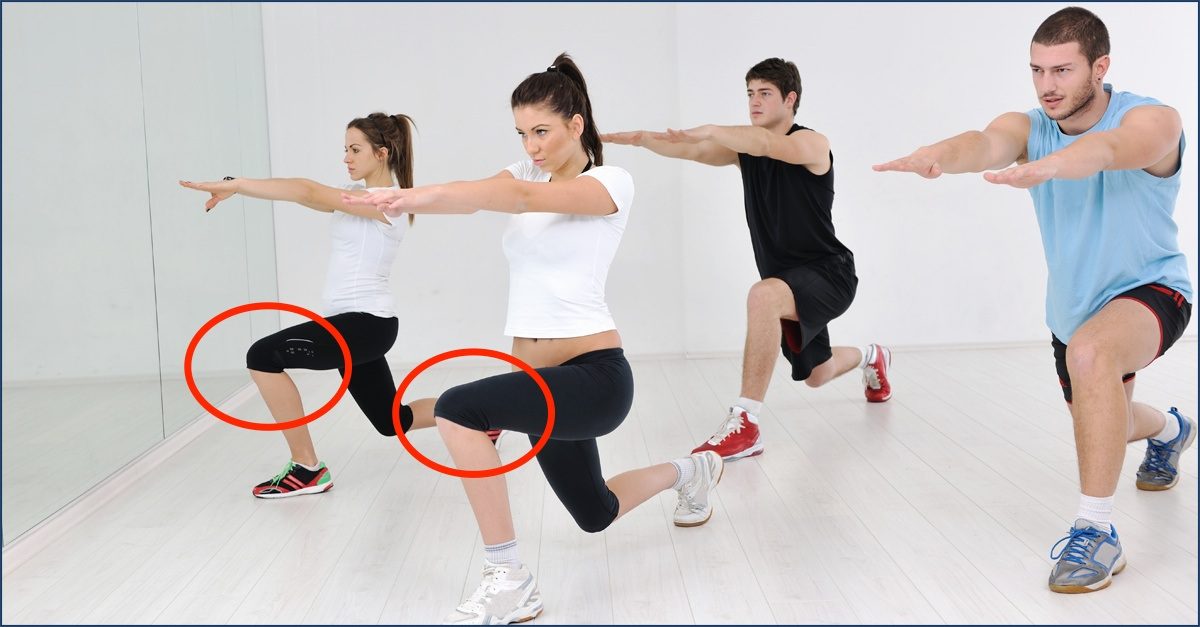For many years, back squats, front squats, walking lunges, and step-ups were the foundation of my lower body programming for all female clients. But that's certainly changed.
Despite coaching perfect form like a drill sergeant, too many of my female clients experienced some level of knee pain following a high volume or intensity bout of knee-dominant exercises like many of the lunge variations prescribed in females programs.
For a very long time I wondered why?
After all, I could destroy my own quads almost daily and feel them thank me with every delightfully sore step without any real pain.
However, while it makes sense on paper to train males and females in virtually the same way, I don't know too many males that wear heels almost every day or spend 3-5 days per week running on a treadmill. In my experience these daily factors -- repetitive stresses which load our body for better or worse -- can make or break even the most well intentioned training program.
We could always simply assign more hip dominant variations of the lunge, but the 23:1 (the client has 23 hours to screw up the one hour of good work they put in with us) rule states that our clients' lifestyle will always win out.
While there's still a time and place for knee dominant exercises, the first step to eliminating pain (and getting our females clients the body they always wanted) begins with a few key fixes to bullet proof the body better than corrective exercise ever could.
Understanding the situation:
When it comes to knee pain, we're facing three "culprits" that keep many of us (especially the fairer sex) from looking and feeling the way we deserve:
Standing on the toes - A condition we all succumb to due to the arrival of heeled shoes, this involves shifting our weight forward of our center of gravity all the time (otherwise known an anterior weight).
While many factors determine the severity of this issue -- how tall we stand, heel height, and the length of the foot -- the inevitable result is that our weight is shifted onto the toes, and the front of our legs and hip flexors are constantly working while the butt and posterior muscles go virtually unused.
Standing with the feet close together- Most of our female clients have been taught that ladies stand with their legs together. The problem with this strategy is that it imposes a rotational torque on the knees and drives lower leg and pelvis inward contributing to issues such as pronation and hip rotator weakness. Oh, and it also ends up aching like hell.
Sitting the wrong way- Does your client slouch or arch the back when siting in a chair? In either case, the problem is the same -- sitting back in the chair versus sitting on the edge.
By loading the majority of their weight on to the tailbone and low back (instead of the glutes), we create excess tension in these areas while sitting in a hip flexed position for hours on end.
Common sense solutions:
"I feel constant tension in the front of my legs. The inside of my knee caps always hurt when I stand for too long. My feet ache so much I have to remove my shoes after long periods of standing."
These are things I used to hear all the time from my mom, my girlfriend, and the many women I work with. I'd advise them to roll/stretch the areas around their knee at home -- quads, calves, hip rotators, TFL, etc. -- and they'd do exactly nothing, because doing this stuff at home is about as exciting as watching paint dry.
Even when they did, all the corrective exercise in the world won't fix bad habits. With this in mind, I began taking a different approach was has virtually eliminated knee pain in our gym.
Step #1- Education
This involved educating our clients on some simple fixes for their sitting and standing posture. See the following videos:
Standing without pain explained:
Sitting without pain explained:
Step #2- Imbalanced programming
Depending on the severity of the client's habits, we'll often eliminate knee-dominant exercises for the first 8-12 weeks while teaching/emphasizing the hip hinge and building strength in the posterior chain. Staples in our program include the barbell hip lift, sumo deadlifts and one-leg Romanian deadlifts.
As we transition back toward knee dominant exercises, we often start with reverse lunges and box squats which emphasize a more vertical tibia and use the hip-hinge to bias the posterior chain in typically knee dominant exercises -- walking lunges, split squats, step ups.
Programming modifications:
Step #3- Accountability
If you really want your clients top change their habit, write it down and constantly text, call and pester them on Facebook about it. Challenge them to take selfies of their knees in the correct posture and reward their participation with praise.
Rather than trying to hammer them with everything above, choose one cue at a time like "stand on your heels versus your toes." Focus on this one thing and emphasize it during training sessions and conversation until it becomes habit.
While this stuff may take a while, your clients will place value here when they realize how important it is to you. To me, this is what being a coach is all about -- and when the pain goes down and their numbers in training steadily rise, you'll earn many clients for life.










